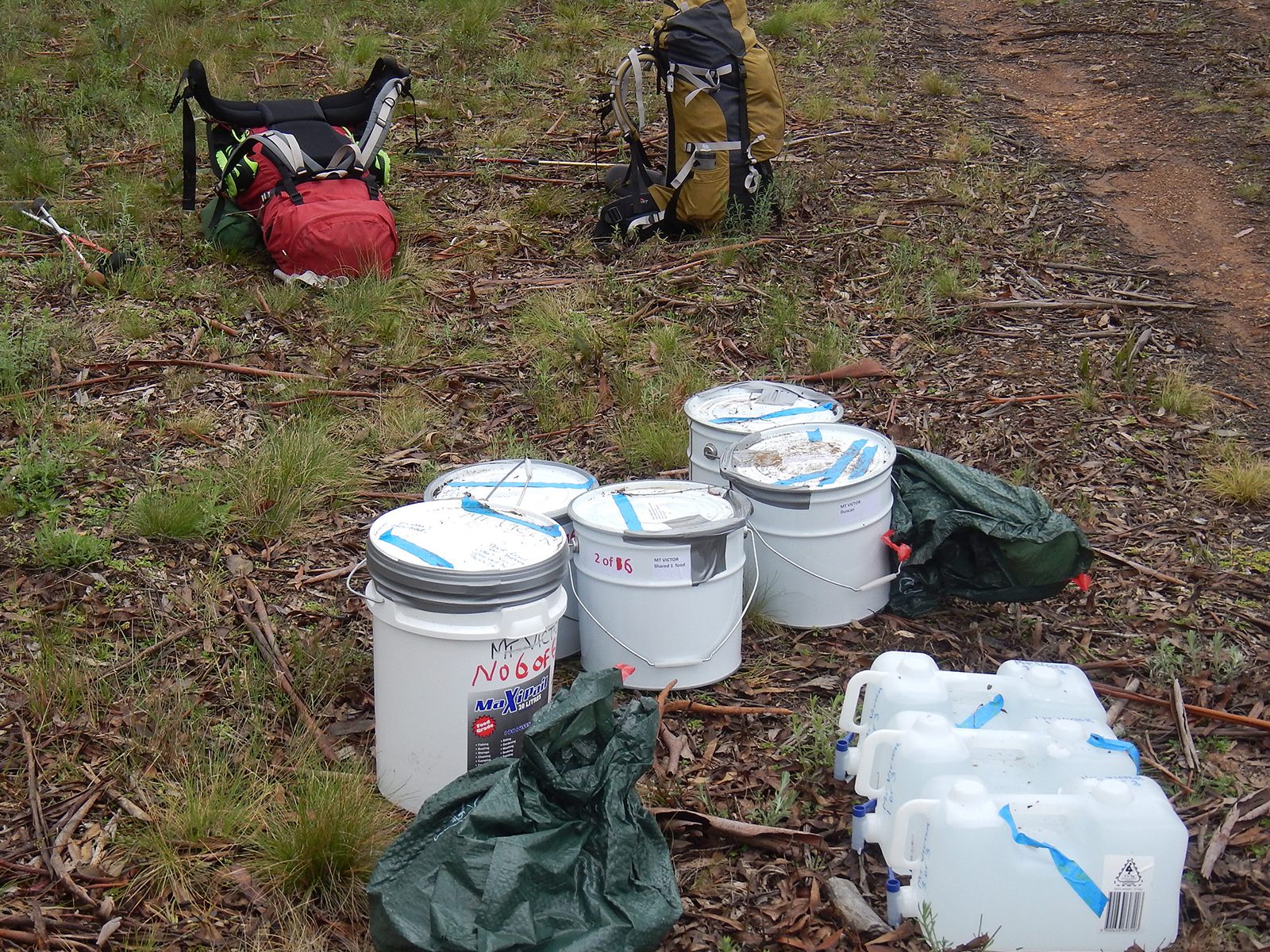Reading Time: 2 minutes
For some extended trips or skiing base camps food rations and water (if needed) can be placed along the route or arranged to be left at a property. Perishable food is obviously unsuitable for food dumps.
- Plastic or metal drums provide protection for the contents from weather and animals.
- Note that cardboard boxes and plastic bags do not provide adequate protection of food against wildlife and weather.
- Options include empty paint drums with a ring-clip lid or plastic drums with a screw or clip-on lid.
- Containers with press on lids may require a tool to help open them which can be taped to the drum.
- Lids can be taped to avoid them coming off if knocked over or investigated by animals and as a barrier to ants.
- Plastic boxes with a fitted lid can be used for food drops left at commercial premises e.g. a ski village or a tourist office.
- Clearly label container(s) with a name and date of intended collection and a date after which the food dump becomes common property, usually a week or so after the planned pick up.
Additional food dump contents
Food dumps can contain:
- Toilet paper, spare batteries, medical supplies, matches, pot scourer, sunscreen, repellant, a book, etc.
- Heavier treats e.g. tinned fruit or pudding, or heavier meal items, e.g. tinned fish or chicken, vegetables, soups or shelf-stable packaged meals that simply require reheating.
- Stove fuel and water is best left next to food containers to avoid leaks. Even a small fuel leak will permeate the food and ruin it.
Locating food dumps
- Food dumps should be located where they can be easily retrieved.
- Food dumps are often placed several weeks or months before a trip, e.g. before road closures due to winter snowfall.
- Be aware that food dumps put in too early may be lost in fuel reduction burns or bushfires.
- Food dumps are generally spaced at 5-7 day intervals depending on access to the area and the weight of food that can be carried.
- Locate food dumps so that others cannot find them e.g. well away from huts and regular campsites and from roads or tracks. They can be disguised by placing them into a green or black plastic garbage bag then hidden in a bush thicket or in a natural depression and covered with leaves and bark.
- Carefully mark the location of each food dump on a map and as a GPS waypoint, and share with the rest of the group.
- For food dumps placed ahead of a winter ski trip, a string tied on a high branch above the dump can also be very helpful in finding the dump as it may be under snow when collected.
When leaving a food dump, seal the containers again with all rubbish inside and hide in the same spot. Containers must be collected as soon as practicable after the trip.

